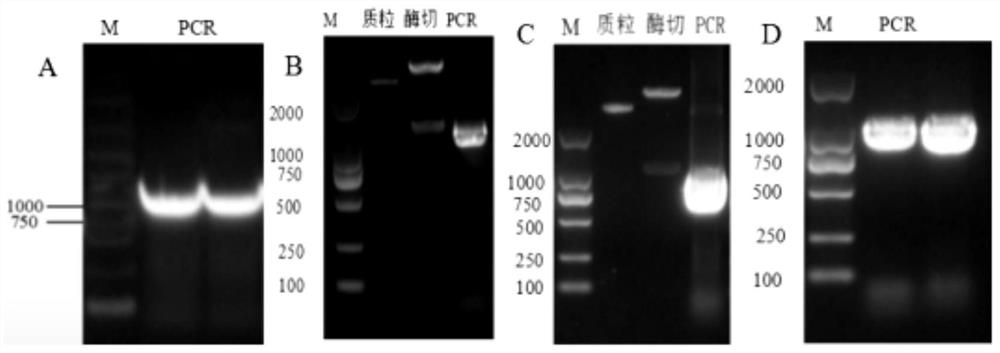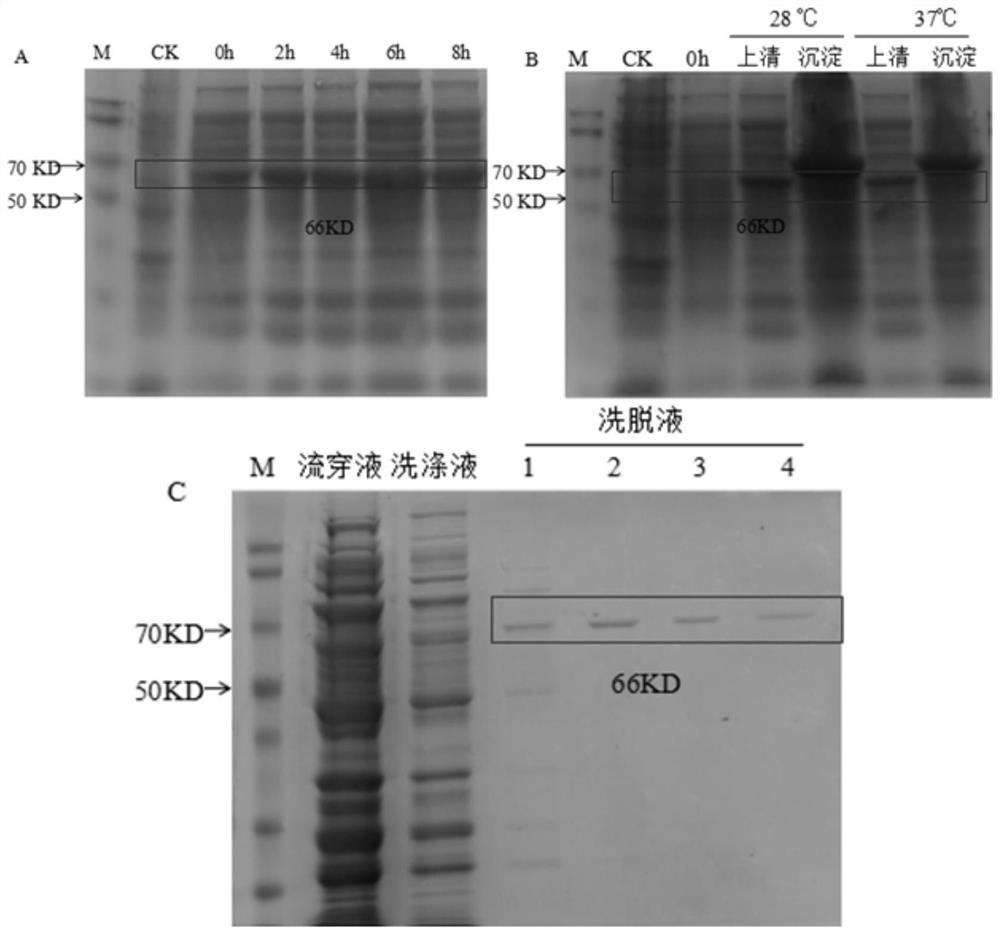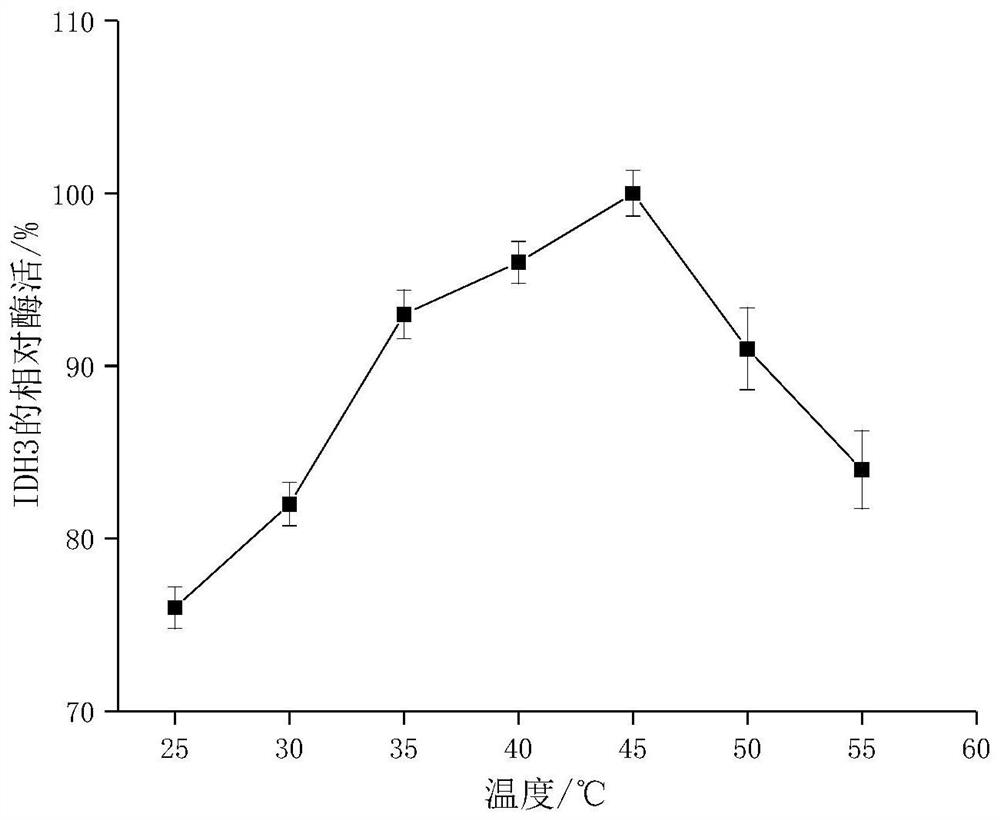Application of isocitrate dehydrogenase in improvement of formaldehyde absorption and metabolism capability of plants
A technology of isocitrate dehydrogenase and formaldehyde absorption, applied in the field of molecular biology and genetic engineering, to achieve the effects of facilitating planting, improving formaldehyde absorption efficiency, and easy storage
- Summary
- Abstract
- Description
- Claims
- Application Information
AI Technical Summary
Problems solved by technology
Method used
Image
Examples
Embodiment 1
[0039] Example 1: Construction of prokaryotic expression vector of AtIDH3 gene and its protein expression and purification
[0040] TRIzoL Reagent (Invitrogen) was used to extract the total RNA of Arabidopsis leaves, and the operation was carried out according to the instructions; 25 μL RNA was reverse-transcribed into cDNA with M-MLV Reverse Transcriptase (Fermentas Company) reverse transcription kit; 1 μL cDNA was used as a template, Perform PCR to amplify the target fragment. The CDS sequence (At4G35650) of Arabidopsis thaliana IDH3 was found in NCBI, and its double restriction sites (BamHI and SalⅠ) and gene-specific primers (F-ATGGCGAGAAGATCCGTTTC; R-CTCAAGAGCTGCTATGACAGCA) were designed by DNAman software. Use designed specific primers to carry out PCR amplification, gel recovery AtIDH3 gene fragment ( figure 1 A), store at -20°C for later use. Gel recovered AtIDH3 gene and pMD18-T for TA cloning to obtain pMD18-AtIDH3 vector, heat shock transformed DH5α, smeared in am...
Embodiment 2
[0043] Embodiment 2: Determination of isocitrate dehydrogenase enzyme activity
[0044] The protein concentration was determined using the BCA method protein quantification kit produced by Shanghai Jierui Bioengineering Co., Ltd., with bovine serum albumin (Bovine serum albumin, BSA) as the standard protein, and operating according to the Bradford method according to the kit operation manual. The enzyme activity was measured by spectrophotometry, and the enzyme activity assay system of IDH was 20mmol / L Tris-HCl, 5mmol / L MgCl 2 , 5mmol / L DL-isocitric acid trisodium or 0.5mmol / L DL-isocitric acid trisodium, 2mmol / L NAD + or 0.5mmol / L NADP + . At 25° C., a UV spectrophotometer was used to detect the change of light absorption value at 340 nm during the reaction.
[0045] (1) Optimum temperature and thermal stability of isocitrate dehydrogenase AtIDH3
[0046] In the above reaction system with other conditions unchanged, at 25°C, 30°C, 35°C, 40°C, 45°C, 50°C, 55°C, in a water ...
Embodiment 3
[0056] Example 3: Preparation and titer detection of AtIDH3 protein rabbit antibody
[0057] 1 mL of the purified recombinant protein (containing approximately 5 mg of purified AtIDH3 protein) was emulsified with 1 mL of Freund's adjuvant at a ratio of 1:1. First add Freund's adjuvant into the mortar and emulsify several times; until a qualified water-in-oil agent is prepared, rabbits can be immunized. When the rabbit was immunized for the first time, it was emulsified with an equal volume of complete Freund's adjuvant, and the whole body of the rabbit was immunized several times in a small amount, and a small amount of antigen was injected at each point. Inject the antigen as evenly as possible into each immunization point through various methods such as intramuscular, subcutaneous or intradermal injection. Two weeks after the first immunization, the AtIDH3 antigen was emulsified with an equal volume of incomplete Freund's adjuvant to boost the rabbit. Weekly booster immuni...
PUM
 Login to View More
Login to View More Abstract
Description
Claims
Application Information
 Login to View More
Login to View More - R&D
- Intellectual Property
- Life Sciences
- Materials
- Tech Scout
- Unparalleled Data Quality
- Higher Quality Content
- 60% Fewer Hallucinations
Browse by: Latest US Patents, China's latest patents, Technical Efficacy Thesaurus, Application Domain, Technology Topic, Popular Technical Reports.
© 2025 PatSnap. All rights reserved.Legal|Privacy policy|Modern Slavery Act Transparency Statement|Sitemap|About US| Contact US: help@patsnap.com



